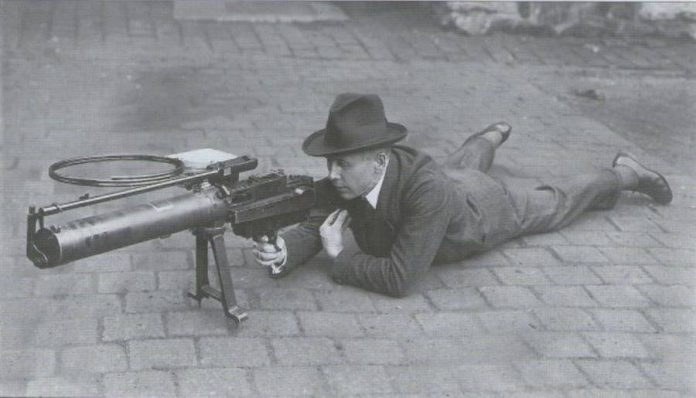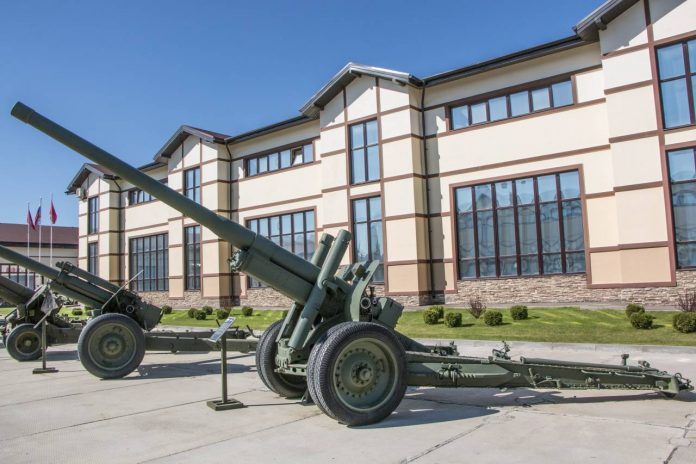
Home Articles wants very serious. Finally reached! Not to Berlin, as the heroine of our story, and to the history of the, design and combat the use of one of the first large caliber artillery systems, created by Soviet designers.
so, known unknown hero of the Great Patriotic, Popular Member documentaries, thunderstorm opponent 122mm gun cabinet A-19.
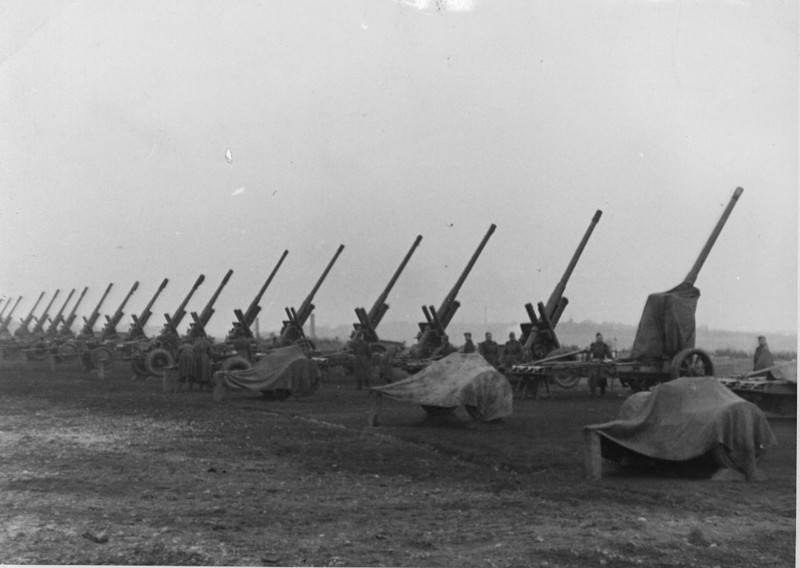
Paradox, but, working with materials of the gun from different sources, you suddenly realize that a strange thing. A variety of materials. And at the same time, materials little. Even in a fairly serious sources. But no, probably, winning newsreel films, where there would be no frames with this instrument. And rightly. In our opinion, a tool very «photogenic» and harmonious look. And hammer ...
The first assertion, we will do. Case cannon A-19 does not have its roots in the land of the Red Army Artillery. Unlike other systems, in this gun in the ancestors listed naval guns. weapon, which they were equipped warships, kanonerskie boats, heavy armored, shore batteries.
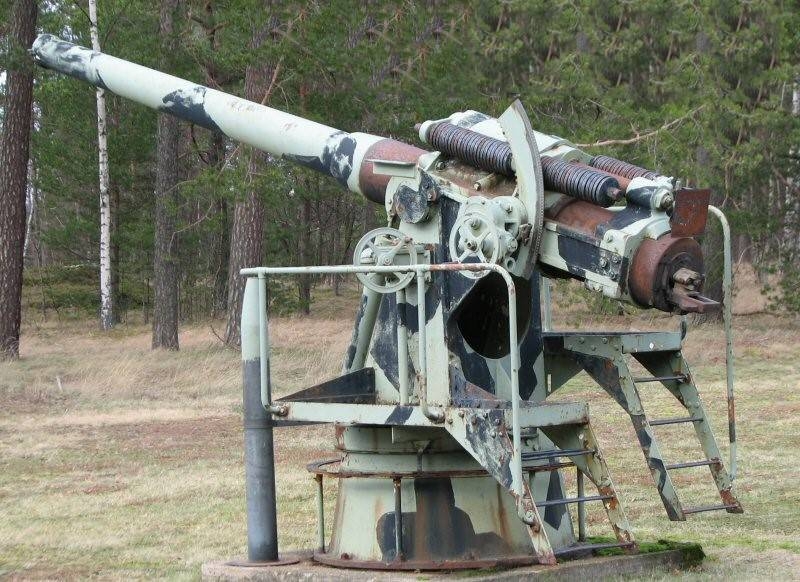
This 120mm gun French system designer Kane. It is these guns produced Obukhov and Perm refineries with 1892 year, according to the signed Agreement with the French company Forges et Chantiers de la Mediterranes.
The second statement refers to the caliber of guns. 48 gauge lines (121,92 mm) - this is a purely Russian invention. And it leads its beginning from the first Russian howitzers. This is what we wrote earlier. Respectively, with time, such caliber and established for heavy guns. can say, Russian military-historical specificity.
And the third statement. The appearance of the A-19 is closely related to the civil war in Soviet Russia. That understanding of the experience of the war has led designers to understand the need to create a highly maneuverable guns, capable of firing in both planes pickup and not stay on long positions. This statement, in many ways, based on using Kane systems on the train. It was there that was used to install tools column book-rests option.
The thing is, that in most of the other armies in the period analyzed the experience of the First World War. And there, Unlike the Civil, such tools were used for counter-battery fight. Simply put, We had very specific tasks.
But back in the turbulent 20s of the last century. Already during the Civil War, it became clear, that the 107 mm cannon arr. 1910 of the year «aging». its modernization has been planned. but, after a lot of discussions on this issue, modernization of abandoned. The potential for improvement of the structure-borne instruments has been exhausted.
Therefore, in January 1927 Artillery, the Committee decided to begin work on a new 122-mm gun cabinet. The Bureau of the Artillery of the committee on creation tools headed Franz Frantsevich Lander, who left their mark in the world of artillery and forever entered the history of this arm.
Let us forgive those, who are only interested in the technical issues of artillery systems, but here just need to do a little, but important digression. The thing is, in our opinion, Soviet-Russian historiography name F. F. Lender just do not deserve forgotten. As often happens.
And it is this constructor was the father of the Soviet anti-aircraft artillery! It was formed in 1915 , the anti-aircraft battery of guns Lender-Tarnow considered the beginning of the Russian air defense.
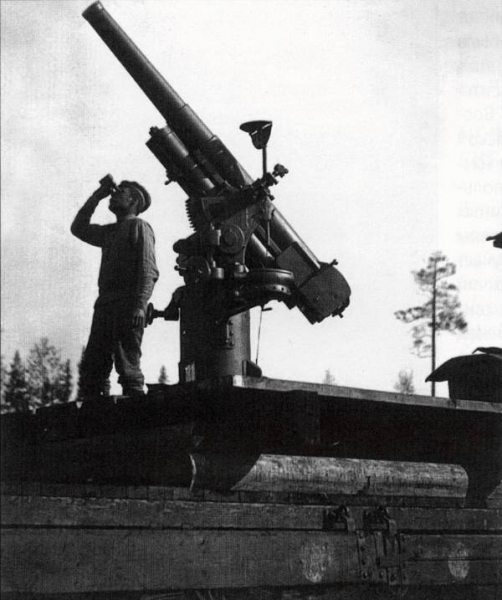
so, Franz Frantsevich Lander was born 12(24) April 1881 of the year. AT 1909 He graduated with honors from the mechanical department of the St. Petersburg Institute of Technology. After graduation he was appointed technical manager of the technical office of the Artillery of the Putilov plant. AT 1908 It was designed by the first wedges for guns, which is patented in Russia, USA, France and England.
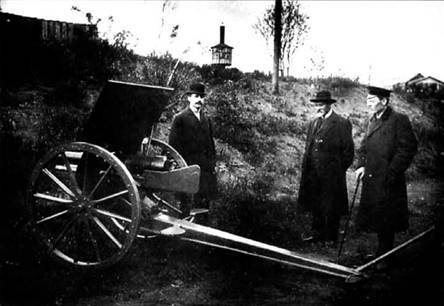
AT 1914 he created in collaboration with the designer in. AT. Tarnowski first mobile anti-aircraft 76mm cannon in Russia.
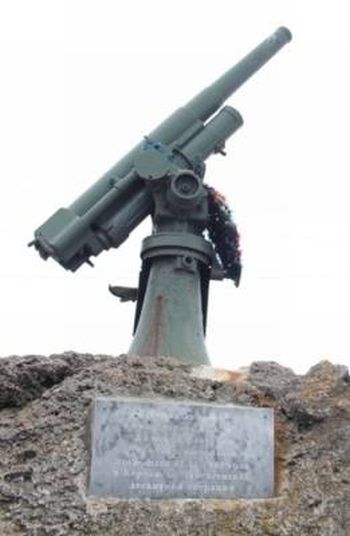
FROM 1920 he led Artillery Design Bureau. AT 1927 year, when he was sick, almost lying down in bed, I created a 76-mm regimental gun mod. 1927 of the year. died 14 September 1927 of the year. His case was continued by his son, Vladimir Francevic Lender.
by the way, at 2017 , 76-mm anti-aircraft gun Lander, released in 1927 year, We found on Novaya Zemlya during exercise. In the area of the magnetic observatory Matochkin. As reported by RIA Novosti 21 Martha 2018 of the year, Renovated gun was admitted to the test firing. He fired five firing charges and put on records management in the RAV service of the Northern Fleet on the nomenclature of marine artillery armament!
But back to our heroine. After leaving Lander, development team continued the arsenal of gun-trust under the direction of C.. P. Sukal. A final revision made team of engineers KB plant №38.
Paradox, but that refinement plant designers made it possible to quickly try different design solutions. This also applies to the receiver group, where differences are most visible (muzzle brake, leynirovanny or bonded type of barrel), and a gun carriage.
Carriage for the instruments was largely «the stumbling block». It was necessary to combine the high performance of the angles and the ability to move the pickup with a sufficiently high speed. Hence the need for a mandatory suspension gun.
Ultimately, the designers settled on a gun carriage with sliding supports to. According to most researchers, it was a progressive solution. However, the lack of automatic shut-off suspension, it is not entirely satisfactory performance for off-road, and the combined balancing mechanism trunk and vertical crosstalk, were major disadvantages mast 122 mm gun body arr. 1931 g. To the gun carriage was a bunch of separate claims, since he "scored" extremely slow change in elevation, that was fraught for the calculation and implements fatal consequences in some combat situations.
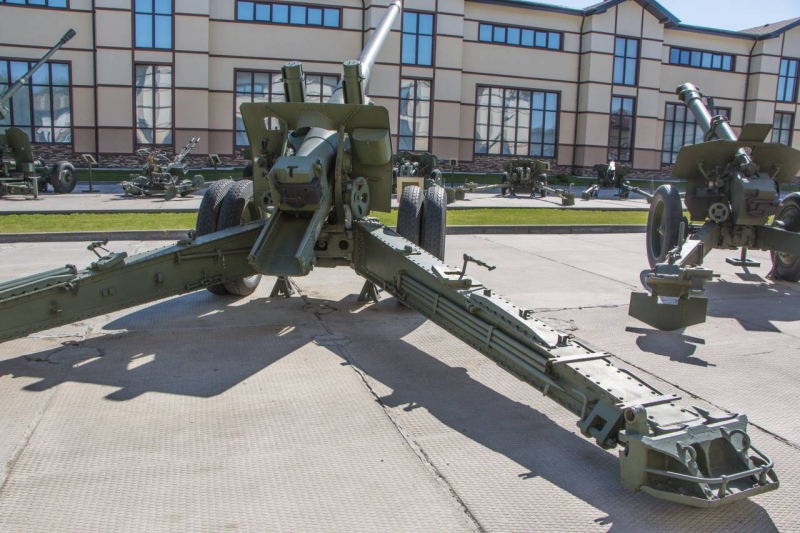
Officially cabinet 122 mm cannon arr. 1931 year was adopted by the 13 Martha 1936 of the year. Across 9 years after the start of development. However, her work continued improvement. The thing is, that during operation the disadvantages became visible to the naked eye.
Let me repeat the most important points. Not very successful design of the wheel stroke limited mobility gun. No automatic shutdown suspension decreased rate of transition from stowed to deployed position and back. The lifting mechanism was unreliable and did not have the required trunk lifting speed. AND, finally, technological complexity of the production of the mast. Flitches was really difficult and time consuming for the time.
By the end 1936 year there was a 152-mm howitzer-gun in the Red Army ML-20, too, which had a modern carriage design. AND, as it often was at the time, the idea to create a duplex. Impose trunk A-19 with a new carriage! This solved the problem of cheaper production and operation of the instruments in the future.
Finishing work on the A-19 led F. F. Petrov. We carried out this work in the Permian KB plant №172. In September 1938 , the new instrument was submitted for testing. Two months of tests have shown the success of this design solution.
29 April 1939 It was officially adopted a new gun in the arms of the Red Army - «122-mm gun cabinet obr.1931 / '37». The truth is a bit strange, the index «A-19» in this case continued to use. Cannon received different, and the index to keep the old.
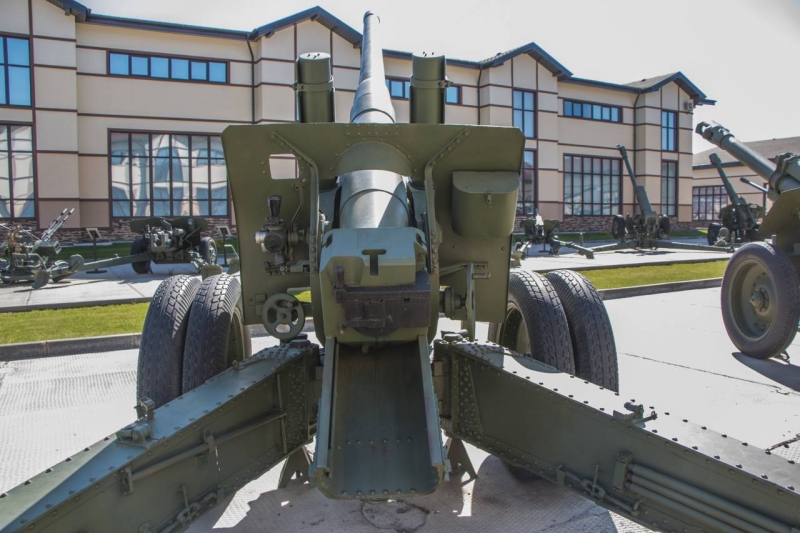
For a more complete understanding of this fact give TTX both guns:
obr.1931 d. / obr.1931-37 gg.
The length in the stowed position: 8900 mm / 8725 mm
Width in traveling position: 2345 mm
The height in the stowed position: 1990 mm / 2270 mm
Weight in firing position: 7100 kg / 7117 kg
The mass in the stowed position: 7800 kg / 7907 kg
Trunk
Caliber: 121,92 mm
barrel length: 5650 mm (L/46,3)
The length of the threaded portion: 5485 mm (L/36)
The height of the line of fire: 1437 mm / 1618 mm
fire characteristics
Vertical angle range crosstalk: from -2 ° to + 45 ° / from -2 ° to + 65 °
Range traverse angle: 56° (28° left and right) / 58° (29° left and right)
Maximum range of fire grenade RP-471:19.800 m
The maximum rate:3-4 shots per minute
Mobility
Clearance (ground clearance): 335 mm
Maximum towing speed on highway: 17 kmh / 20 kmh
Other
Calculation: 9 human (gun commander, two gunner, castle, five charging and porters)
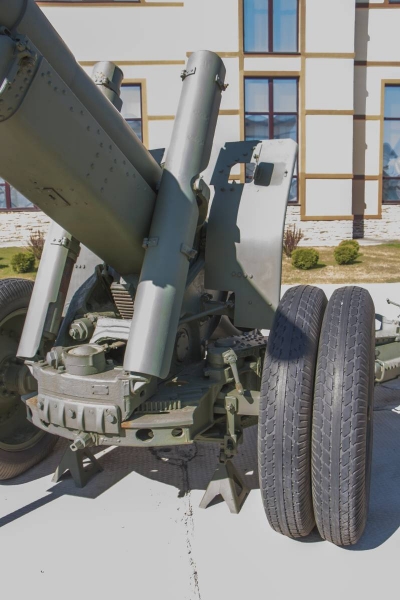
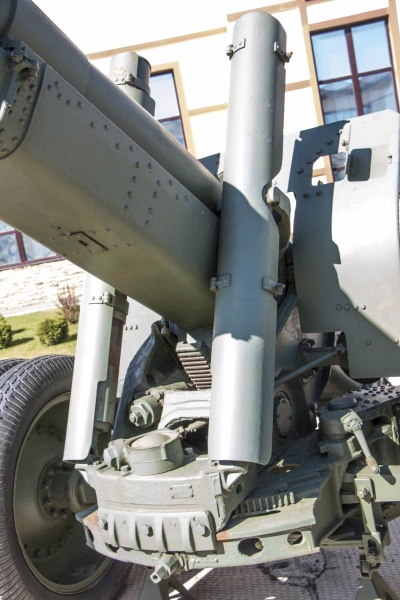
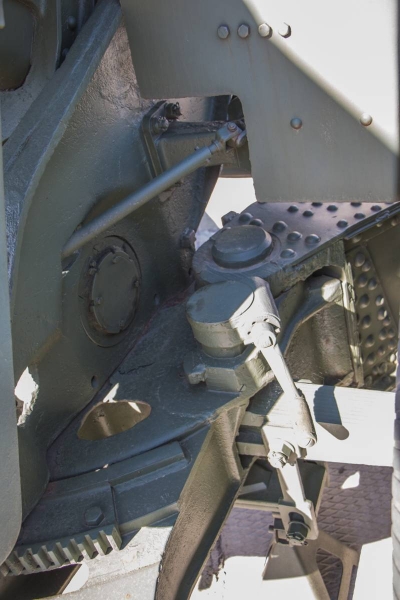
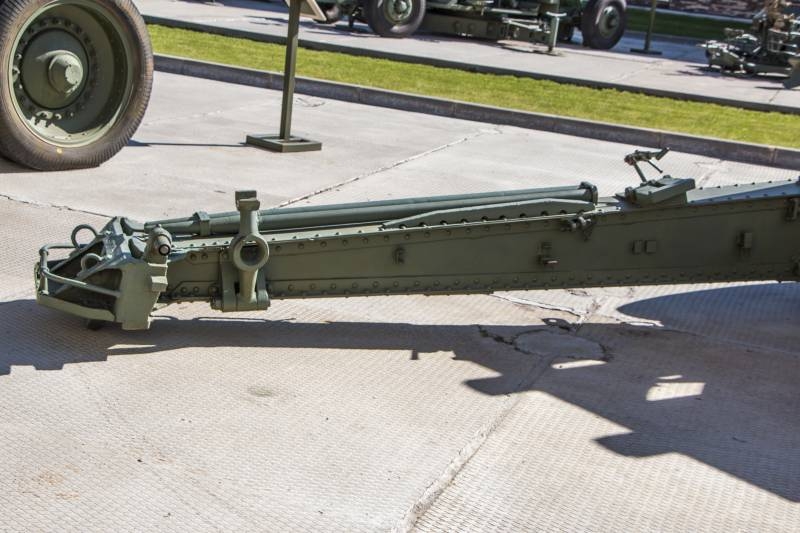
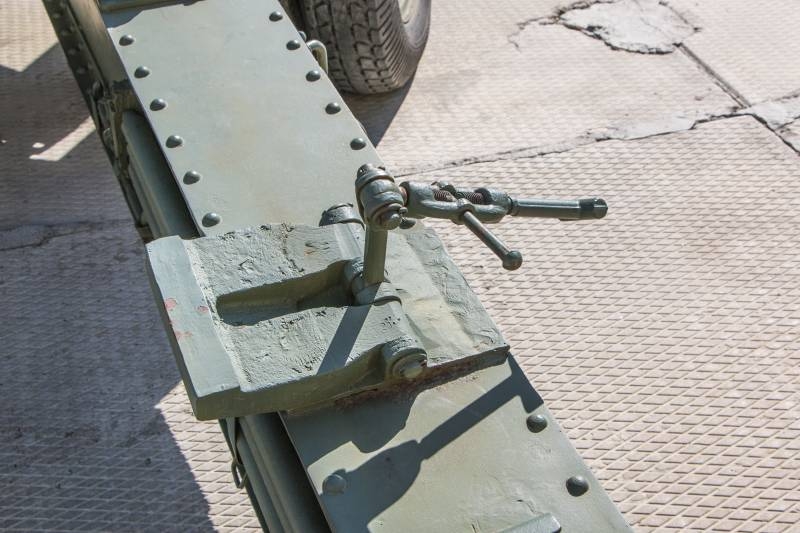
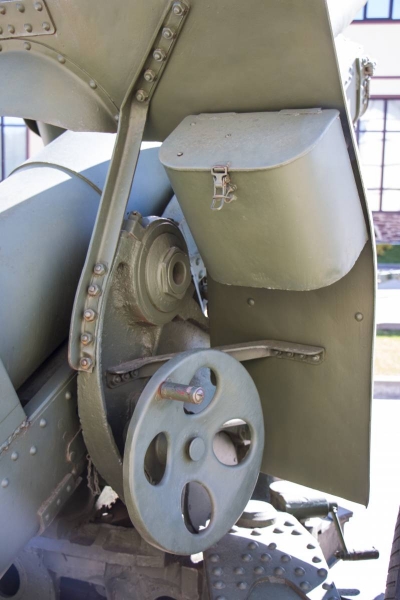
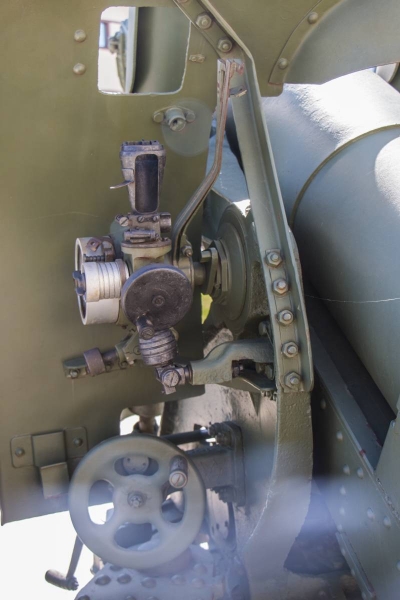
Summarizing the development of A-19, can say, that the objectives have been met almost entirely by their own efforts - the Red Army received ranged, powerful and moderately mobile artillery system.
122-mm gun mod. 1931/37 gg. to 1941 Year manufactured at Stalingrad plant "Barricades", in the years 1941-1946 - the factory number 172 In Perm, also in 1941 , the order for production of weapons of this type was given a new plant number 352 Novocherkassk.
Unfortunately, the available statistics do not distinguish between the issue of modifications 122mm guns hull, estimated number of sample cannons 1931/37 gg. It can be estimated at 2 450 PC. In total, over 1935-1946 years, was released 2 926 PC. 122-mm guns, two modifications, not counting the guns, intended to be mounted on self-propelled artillery and tanks.
At the end 1943 , it was decided to create a version of the ISU with the installation in her 122-mm cannon A-19. December 1943 , the prototype of the "Object 242" of the new self-propelled guns was built and handed over to the test. 12 Martha 1944 , the ACS was officially put into service under the symbol of the Red Army of the ISU-122, April of that year, began its serial production.
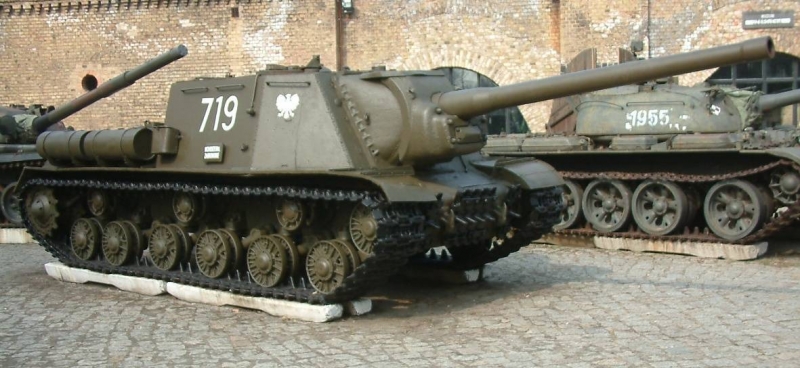
special modification of the A-19 has been designed for installation in SAU under the symbol A-19C (Index GAU - 52-PS-471). Differences between self-propelled gun variant of towed is to transfer the guidance organs guns on one side, equipment breech-receiver tray for easy loading and the introduction of electric trigger. ISU-122 Production of A-19C continued until 1945 , inclusive, all were released 1735 machines.
But there is the A-19 and «grand children». Many of our readers have seen, but in no way associated with this gun cabinet. Without a story about these guns any article would not be complete.
In August 1943 year F. I. Kotin, "IC" Designer promising heavy tank, relying on the experience of the Battle of Kursk (demonstrated high efficiency 122mm heavy guns against German tanks), He proposed to equip the new tank gun A-19.
The proposal was accepted, and CB plant number 9 It was ordered to urgently develop a tank variant of the A-19. In November 1943 , the new instrument was created by superimposing the receiver group gun D-2 on the cradle 85-mm tank gun D-5, initially set in the EC-1 tank. His trial ended in total success.
Since December 1943 year weapon, received the name of 122 mm tank gun sample 1943 of the year (D-25T) ("Combined" index of D-2 and D-5) is installed in the IS-2 tanks. Structurally, D-25T differed from A-19 lightweight structure, the presence of the muzzle brake, transfer controls on one side, the introduction of electric trigger and a number of other details.
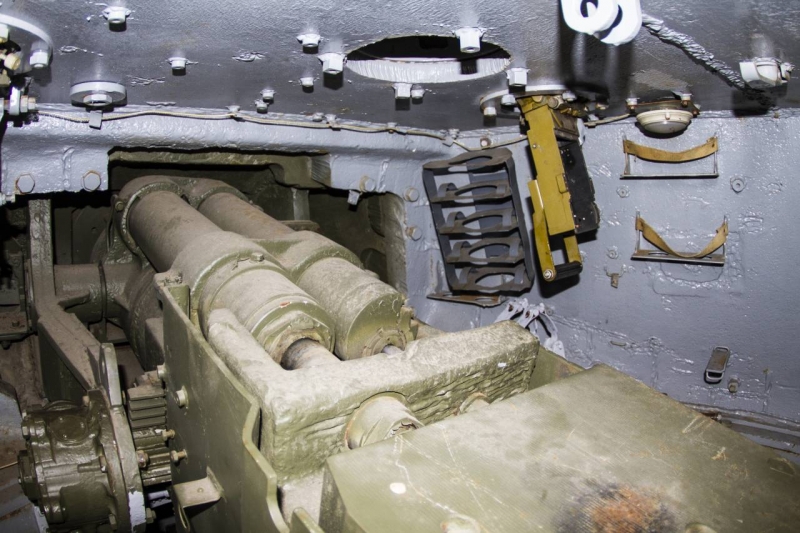
The first modification of the D-25T had, as the A-19, interrupted screw. At first 1944 year series went modification of the D-25T with semi-wedges. Ballistics and ammunition D-25T and A-19 were identical. Initially, the amount of release of D-25T was small and considered the possibility of installing IP-2 directly cannon A-19. However, the plant number 9 successfully increased the production of D-25T and the question about installing the A-19 in the IS-2 was dropped.
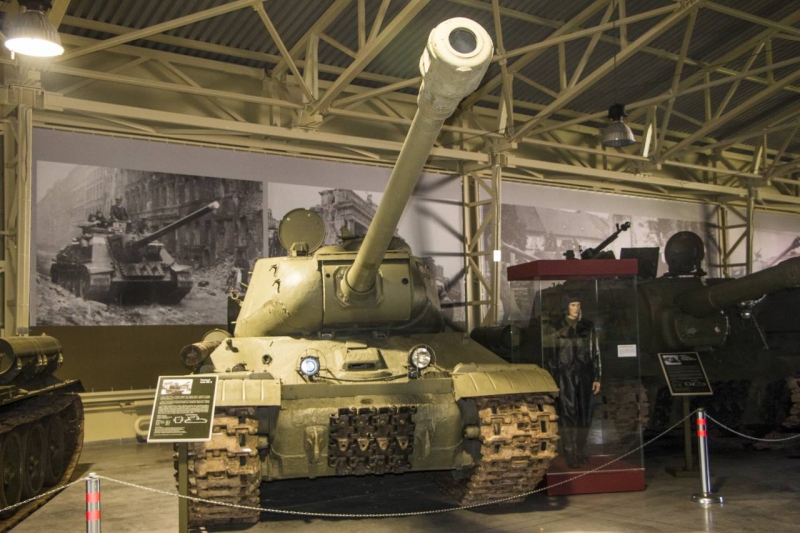
D-25T guns were mounted on heavy tanks serial war-time IP-2 and IP-3, and its subsequent modifications - into experimental and production models of the post-war heavy tanks, eg, heavy tank T-10 was armed 122mm gun D-25TA.
And now we will talk about, which is rare in the technical literature and articles on A-19.
The personal composition of the gun crew. A-19 itself is a complex system of the artillery of his time, to the fullest possible disclosure of its capabilities required know their stuff gunners. And if by porters and charges required mainly remarkable physical strength and endurance, the spotter has had to possess a solid body of knowledge, not to mention the battery commander and subordinate them officers.
Alas, but the personnel of the artillery units of the Red Army could not boast of education, as well as the Soviet Union as a whole. Most of the gunners had only primary education. In the USSR at that time it was decided to teach 7 classes. Those, who finished the 10-tap-hole was extremely small. And people with higher education often valued its weight in gold.
therefore, at the initial stage of the war the shooting was carried out on a line or half-tip. what, naturally, It led to huge losses among the gunners.
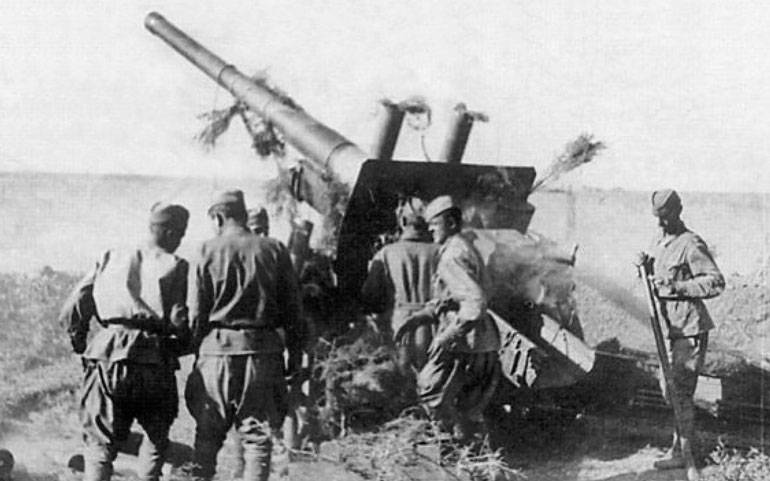
but, for hull guns, by reason of the use of, It was characterized by a high survival rate calculations. Almost several times higher, than in the regiment and division level. This has contributed to training rooms already in the course of the war. The commander and gunner worked «by experience». Calculator with slide rule was seen as a miracle.
As it looked, said the father of one of the authors, who served as commander of a tank platoon leader in Germany at the time, when most were front-line soldiers re-enlisted. «Front-line» crews perform any academic exercise with a large margin of the norm. but to explain, how it's done, could not. Standard response: «If you are so acted in combat, then you burn a couple of minutes».
But getting veterans of knowledge due to the greater amount of printed materials, which then spread. It was from there and drew the soldiers and sergeants of options on how to combat operations in different situations. According to some sources, such leaflets most were released for gunners. but, considering the then confusion and the number of different printers, This assertion can be questioned.
Nevertheless, to 1944 , the corps artillery is normal to carry out tasks, that can be (and need) It had to decide not only direct fire. The best example - the issue of. Who fired the first shot in Berlin?
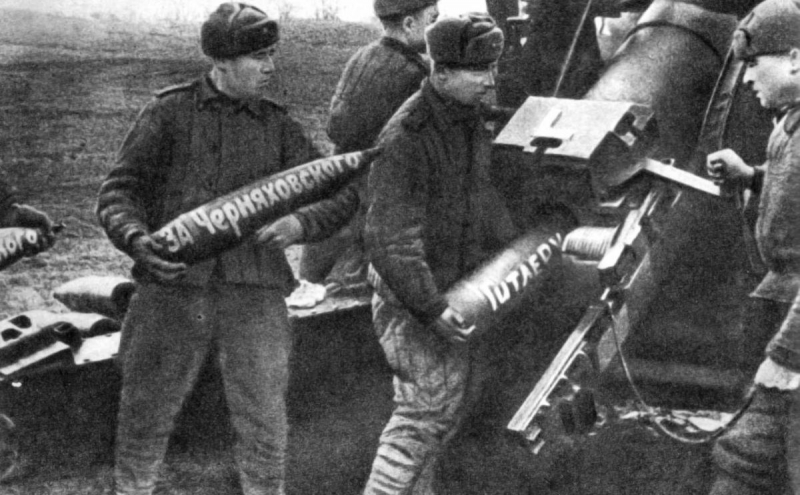
Finish the story about the A-19 want some calculations about the combat use of these tools. That some, because without laughter, there are countries, where these guns are still in service.
For the first time to fight the A-19 began another Khalkhin Goal. The exact number of guns we could not find. But most importantly, loss of housing cannons also not registered there. This means, trial by fire they were successful.
Timers 122 mm gun housing and in the Soviet-Finnish War. On 1 Martha 1940 year was on the Soviet-Finnish front 127 guns. Losses amounted during the war 3 units. And, and in the first, and in the second case, information about modifying guns no.
By the beginning of World War II in the Red Army was to 1300 (1257) guns. Of them 21 the Navy. but, in the western districts were only 583 gun. So that, «gather additionally» It had from the eastern regions of the country.
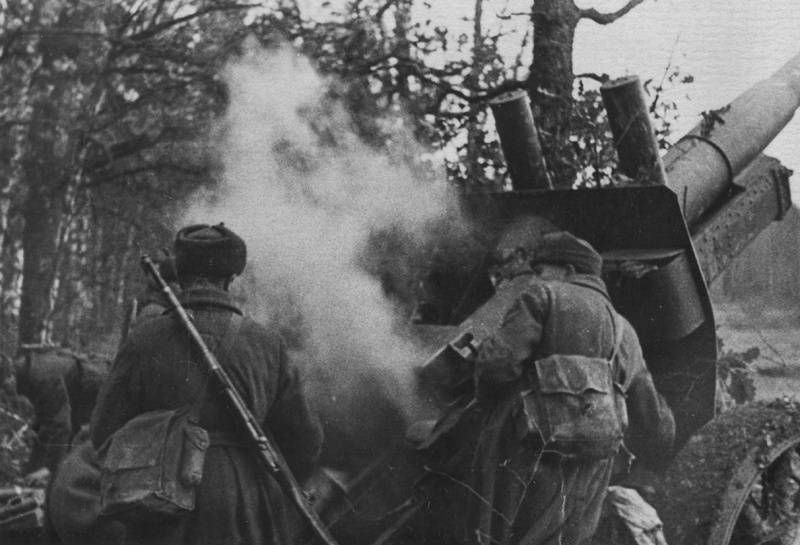
The most serious losses suffered in the artillery corps 1941 year. According to various sources, this year has been lost at least 900 122-mm guns. The remaining tools successfully beat the Nazis, followed by the Japanese until Victory. by the way, interesting fact and the answer to the question, specified above. The first shot of Berlin made exactly 122 mm gun cabinet 19 for A-number 501 20 April 1945 of the year.
Oh, and for those, who doubt «using non-core» weapons. In the defense of Moscow, on the Volokolamsk highway, 122-Case-mm cannon successfully repelled the attack German tank. The Kursk Bulge housing cannons were used as antitank guns against the heavy tanks. These battles can be viewed not as a norm, as well as the last chance to command. After the battle, experts examined the wrecked German tanks from those, that the Germans did not have time to evacuate. Alas, victories in the A-19 was not…
by the way, in his time at the site in Kubinka tested the Soviet guns against the German Panther tank. A 19-broken front armor thickness of the tank 80 mm with a slope of 55 ° to the normal at a distance 2,5 km, Moreover, it was stressed, that this is not the limit. for comparison, the latest at the time of 100-mm BS-3 field gun punched the same armor plates up to 1,5 km.
Generally, for its time, a 122-mm gun obr.1931 / 37's was quite modern, structurally perfect instrument, in which very successfully combines high firepower, mobility, manufacturability and simplicity of operation. Modification sample guns 1931 year helped to get rid of most of the disadvantages of this product. A quality design confirmed the operation for many years.








